The Beginners Guide to Molly Fish Tank Setup And Maintain
Setting up a molly aquarium at home can be an exciting and rewarding hobby. Even beginners can create a thriving underwater environment with planning and proper equipment. When setting up a molly fish tank, one of the first decisions is what aquatic environment you want to create.
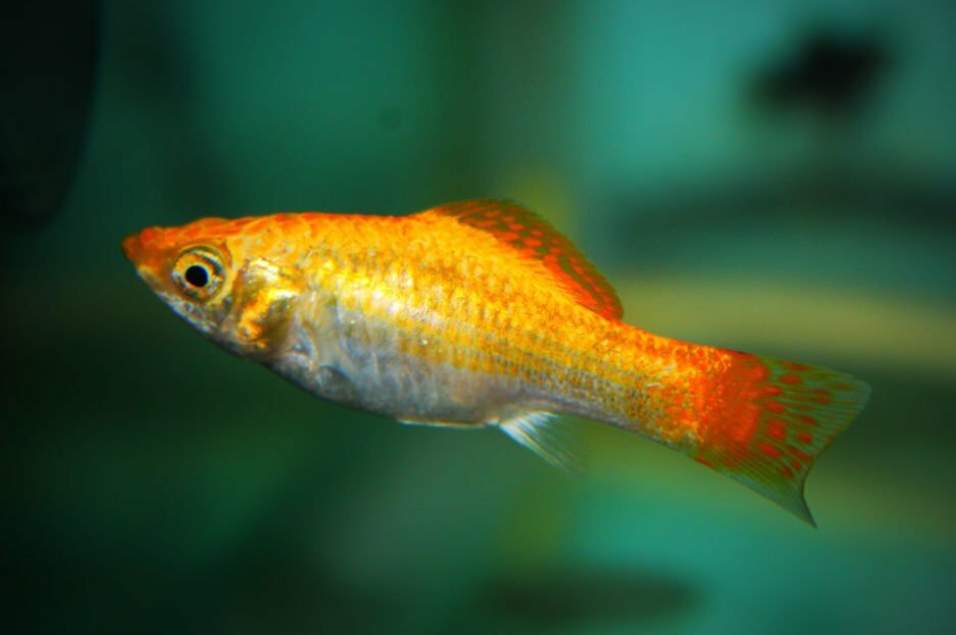
Table of Contents
- Choosing a Molly Fish Tank Location
- Choosing the Best Molly Fish Tank Size
- Why Molly Fish Bowls Are Bad?
- Molly Fish Tank Water Chemistry
- Essential Molly Fish Tank Equipment
- Doing Partial Water Changes
- Choosing Compatible Fish
- Male to female ratio in a Molly fish tank
- Molly Fish Diseases and Treatments
- Conclusion
Choosing a Molly Fish Tank Location
- Avoid direct sunlight – Position the molly tank away from windows and sunlight exposure, which can cause heavy algae growth. Use curtains, nets or blinds to control light if needed.
- Consider household activity – Pick a spot away from high-traffic areas or noise. Mollyfish is easily stressed by vibrations and noises from things like “speakers, doors slamming, or jumping kids”.
- Access electrical outlets – Ensure you have nearby power sources for the pump, lighting, heater and other equipment. Use surge protectors and avoid loosely connected extension cords.
- Check floor support – Aquariums can weigh over 10 pounds per gallon when filled. Ensure the stand and floor can handle the weight without shifting or sagging over time.
- Allow room for maintenance – Leave space around the tank to access the back and sides for cleaning, top-offs and decorating. Front access only can limit options.
- View the display – Position the Molly fish aquarium where you can easily see and enjoy watching the fish. But avoid areas where direct sunlight will cause glare on the glass.
Taking the time to find the right location will help create a healthy and visually appealing aquarium display. Consider the practical requirements and find a prime viewing spot to enjoy your new fish tank fully.
Choosing the Best Molly Fish Tank Size
Mollyfish tank size plays a significant role when you keep molly fish. Mollyfish need considerable space to swim up and down. Mollies are not fighting fish. But mollies fight each other when they get limited space in the tank.
- Bigger is easier – Larger tanks (55+ gallons) require less frequent maintenance as there is more dilution of fish waste. Better for beginners.
- Small tanks need more care – 10-20 gallon tanks look nice, but water quality can deteriorate fast from fish waste and overfeeding.
- Consider available space – Make sure you have room for the molly tank and equipment like “stands, filters and heaters”. Measure carefully.
- Buy according to budget – Larger tanks get expensive with lighting, filters, and stones. A basic 29-gallon tank kit costs around $200, while advanced 60-gallon tanks can run $800+.
- Allow 2 gallons per inch of molly – This rule of thumb gives enough room for fish to thrive. Don’t overstock.
- Upgrade later if starting small – Beginning with a 20-gallon is fine. Just be diligent on tank maintenance and upgrade later as you gain experience.
- Ask experts – Describe your goals, space constraints and budget to aquarium specialists. They can help guide the right tank size choice.
While large molly tanks look impressive, they require a big commitment. Select the size that fits your current skill level, budget and space available.
Why Molly Fish Bowls Are Bad?
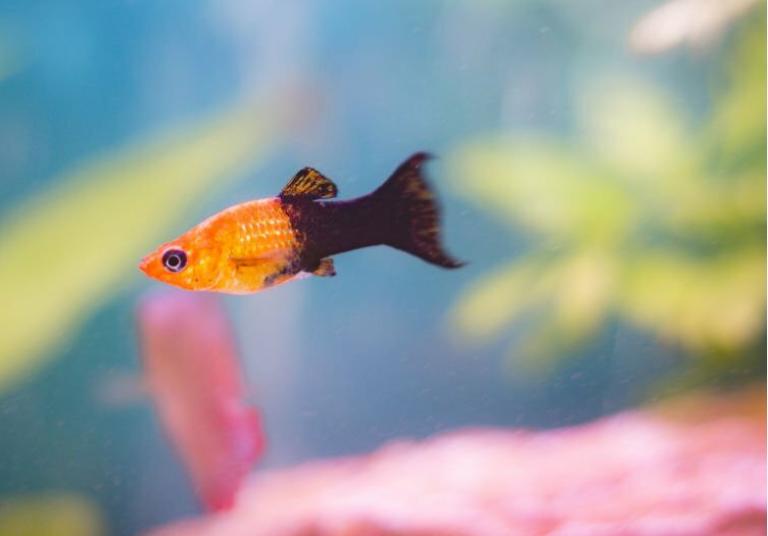
- Limited oxygen – The small surface area limits air-water gas exchange. Low oxygen levels stress fish.
- Ammonia buildup – Molly fish waste accumulates quickly without filtration and water circulation. Highly toxic to fish.
- Temperature fluctuations – Small volumes of water are prone to rapid temperature changes, which can shock fish.
- Lack of swimming room – Molly requires horizontal swimming space for proper health and activity. Bowls restrict movement.
- Complex maintenance – Performing partial water changes and cleaning becomes tricky with the small openings and curved glass.
- Misleading product marketing – Fish bowls are often included in aquarium starter kits for beginners despite being an inappropriate habitat.
While visually appealing, molly fish bowls fail to provide the “water quality, space, and environmental stability” that fish need to thrive. Instead, choose a rectangular tank with filtration for proper oxygenation, waste processing, and heat regulation. Don’t be misled by cheap bowl setups – invest in an appropriate habitat for your fish.
Molly Fish Tank Water Chemistry
- Understand the nitrogen cycle – Ammonia from waste converts to nitrites and then nitrates by beneficial bacteria. Water changes remove nitrates.
- Test water parameters weekly – Use liquid test kits to monitor “ammonia, nitrites, nitrates, and pH”. Optimal levels: ammonia/nitrites 0 ppm, nitrates <40 ppm, pH 6.5-7.5.
- Perform partial water changes – Replace 10-25% of molly fish tank water weekly to export nitrates and replenish minerals. Use a water conditioner.
- Maintain stable water temperature – Fluctuations in temperature stress molly. Use a reliable heater to keep tropical tanks 78-82°F (25.5 – 27.5°C).
- Provide proper filtration – Filters harbor beneficial bacteria that break down waste. Ensure adequate filtration for tank size and fish load.
- Do not overfeed – Uneaten food rots and spikes ammonia levels. Feed only as much as molly fish will consume in 2-3 minutes, 1-2 times daily.
- Remove waste – Siphon gravel and clean tank walls to eliminate “debris, uneaten food and solid wastes”.
- Add live plants – Aquatic plants absorb dissolved wastes, and help stabilize the nitrogen cycle. Anubias and Java Fern are beginner-friendly.
Mastering basic water chemistry teaches you to maintain clean, healthy water for your molly fish. Testing and changing water should become part of your regular aquarium routine.
Essential Molly Fish Tank Equipment
- Filtration – Appropriately sized hang-on-back or canister filters with “mechanical, biological and chemical filtration” to process waste and maintain water quality.
- Heater – Submersible heaters help maintain stable warm water temperatures 25.5 – 27.5°C (78-82°F) for tropical freshwater tanks. Get a heater rated for your size tank.
- Air pump & stone – Air pumps with an air stone or air wand provide water surface agitation and supplemental oxygenation.
- Thermometer – Crucial for monitoring water temp. Get an easy-to-read floating glass thermometer or stick-on strip.
- Water conditioner – Products like Seachem Prime remove chlorine and chloramines when doing water changes. Essential for molly fish health.
- Siphon – A gravel vacuum simplifies gravel cleaning and water changes. Consider battery-powered options for easy siphoning.
- Test kits – Liquid test kits allow you to monitor ammonia, nitrite, nitrate and pH levels to maintain ideal water quality.
- Fish net – Nets allow you to safely catch mollyfish when needed without damaging their protective slime coat or scales.
- Lid – Tank lids help reduce “evaporation, prevent jumping fish and stop debris” from falling into the tank.
- Food – Get high-quality frozen or pellet foods specifically for your fish species. A varied diet is ideal for health.
Invest in quality gear suited for your molly tank size and fish types to simplify maintenance and provide the right aquatic environment. Don’t cut corners on the essentials for filtration and water quality.
Doing Partial Water Changes
Change 10-25% of tank water weekly. Larger or heavily stocked tanks may need 2x/week. Removes nitrates and replenishes minerals. Use a gravel vacuum to siphon and clean debris from the substrate while draining water. It makes changes easy.

- Dechlorinate replacement water – Use a water conditioner to neutralize chlorine/chloramines in new water before adding.
- Match temperature – Replace with water that’s the same temp as tank water to prevent shocking molly fish.
- Monitor water parameters – Test for ammonia, nitrites, and nitrates before/after changes. It helps assess effectiveness.
- Clean filter media – Swish/rinse mechanical media in old tank water monthly to clear debris and maintain flow.
- Scrape algae – Wipe down tank walls with an algae scraper or soft cloth to keep the glass clean during changes.
- Check the equipment – Ensure “heaters, filters and air pumps” are running correctly. Replace filter cartridges if needed.
- Remove dying plants/leaves – Take out decaying plant matter that can foul water during scheduled changes.
Partial water changes take a little time but are crucial for limiting nitrate buildup and providing fresh, clean water. Create a routine for best results.
www.tinyfishtank.com
Choosing Compatible Fish
When choosing tankmate fish, Know the temperament, behaviours, tank size requirements and water parameter needs of species that interest you.
- Avoid mixing aggressive species – Cichlids, Oscars, and jack Dempsey are territorial and prone to attacking more peaceful fish.
- Match fish of similar size – Large fish may eat much smaller tankmates. But a group of larger fish together can spread aggression.
- Check water condition matches – Coldwater goldfish and tropical tetras have vastly different requirements and cannot be housed together.
- Provide plenty of hiding spaces – “Rock caves, driftwood and plants” help timid fish find shelter and breaks from aggressive fish.
- Introduce fish slowly – Add new fish over several weeks. This lets current inhabitants establish territory before new tankmates.
- Overstock tank to spread aggression – More fish divides aggression between individuals but requires extra filtration capacity.
- Have a backup tank for troublemakers – Be prepared to remove bully fish or victims if aggressive chasing causes chronic stress and health issues.
Taking the time to select compatible fish makes for a harmonious, healthy aquarium. Observe fish relationships and be ready to make changes to ensure the tank remains a tranquil underwater oasis for all inhabitants.
www.tinyfishtank.com
Male to female ratio in a Molly fish tank
Aim for at least 1 male to 2-3 females for fish that school or shoal. This helps spread aggression and prevents one male from monopolizing mating. Avoid keeping just one molly female with multiple males of aggressive species. The lone female would be harassed constantly, leading to chronic stress. Introduce more females instead of more males to address male aggression over mating. The males will divide attention.

Provide plenty of hiding spaces, live plants and line-of-sight breaks to allow Molly females respite from unwanted male attention. Plants and caves help. For non-schooling species like bettas or cichlids, 1 male per tank is best. Mature males of these species are very territorial and will fight.
For live-bearing species, ensure you have at least 2-3 females per male or be prepared to separate pregnant females into their tanks before birthing. Monitor breeding behaviour. If molly males become overtly aggressive while courting females or females appear stressed, rearrange decor or remove aggressors. Maintain the proper male-to-female ratios from the start. Avoid buying groups of juvenile fish where the sex isn’t yet known or apparent.
Careful attention to molly male-female balance helps reduce aggression and supports the natural behaviors of community tank fish. Providing plenty of cover for females to evade males is also essential.
Molly Fish Diseases and Treatments
- Ich (white spot disease) – A small white dot appears on mollyfish. Treat with aquarium salt and medications like Kordon Ich Attack. Raise temperature to 82°F.
- Fin rot – The fish’s fins fray and tear easily. It is usually caused by poor water quality. Improve tank maintenance and use antibiotics like API Fin and Body Cure.
- Swim bladder disorder – Mollyfish has difficulty swimming/staying upright. Stop feeding for 2-3 days, then feed peas. Ensure water parameters are stable.
- Velvet – Rusty gold dusty appearance on skin and fins. Due to parasites. Use copper-based medications and lower light to treat.
- Dropsy – Raised scales, swollen abdomen. Result of kidney failure. Isolate mollyfish and treat with antibiotics. Often fatal if untreated.
- Fish fungus – Cottony growth, decaying fins. Bacteria cause it. Treat with antifungal meds like Pimafix. Improve tank cleanliness.
- Parasites – The belly flashes and swells. Use parasite cleaners like API General Cure to kill external “protozoa, flukes, and worms”.
Quarantine new mollyfish to prevent introducing diseases. Maintain excellent water quality and only treat when you observe clear symptoms.
Conclusion
Setting up and maintaining a thriving aquarium requires time and effort, but it can be an incredibly rewarding hobby. The critical things for beginners to focus on are,
- Select an appropriately sized molly tank and find a suitable location in your home. Bigger tanks are more accessible for beginners to maintain.
- Invest in essential equipment like “filters, heaters and test kits”. Don’t cut corners on items that affect water quality and ecosystem health.
- Learn about the nitrogen cycle and how to maintain proper water parameters through partial water changes, testing, and molly tank maintenance. Keeping water clean is crucial.
- Choose fish species carefully and select compatible tankmates regarding “behaviours, water needs, and size”. This prevents aggression and stress.
- Feed a varied, high-quality diet and avoid overfeeding. Uneaten food pollutes the water.
- Quarantine and observe new fish before adding them to an established tank. Watch for signs of disease and treat when issues arise.
- Perform regular molly tank maintenance like partial water changes, filter cleaning and wiping down glass. This provides fresh, clean water.
The more you learn about the science behind the aquarium ecosystem, the better equipped you’ll be to cultivate a thriving underwater environment. Patience and dedication to molly fish care are required, but the payoff is a beautiful, healthy home aquarium.
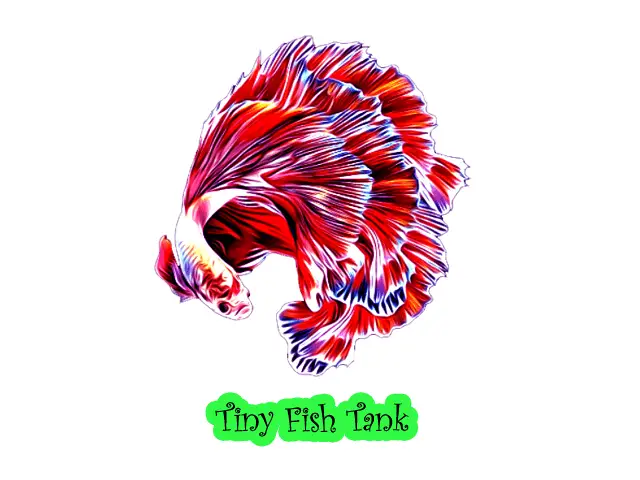
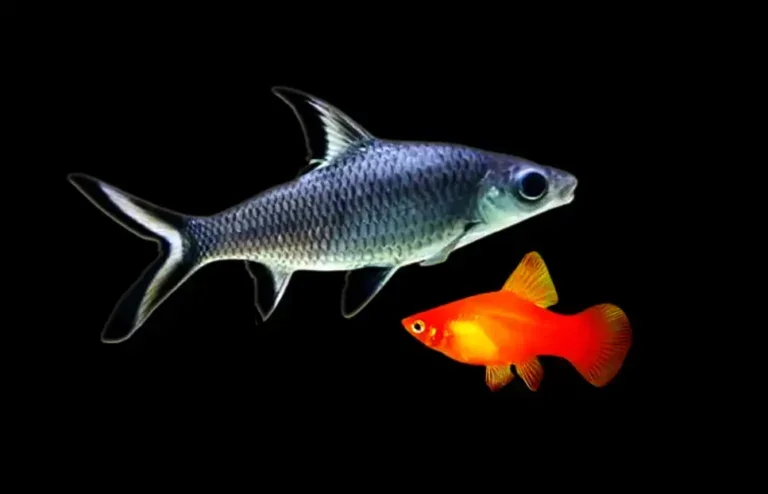
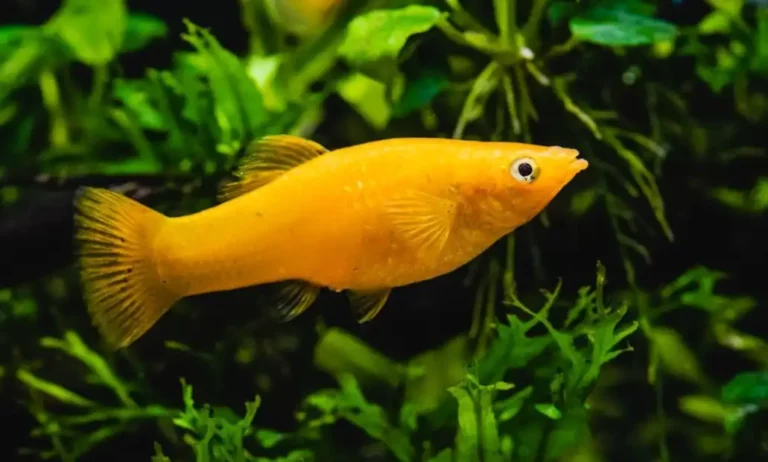
![The Aggressive Behaviors of Mollies Towards Tank Mates [5 Strategies]](https://www.tinyfishtank.com/wp-content/uploads/2023/11/Aggressive-Behaviors-of-Mollies-768x510.jpg)
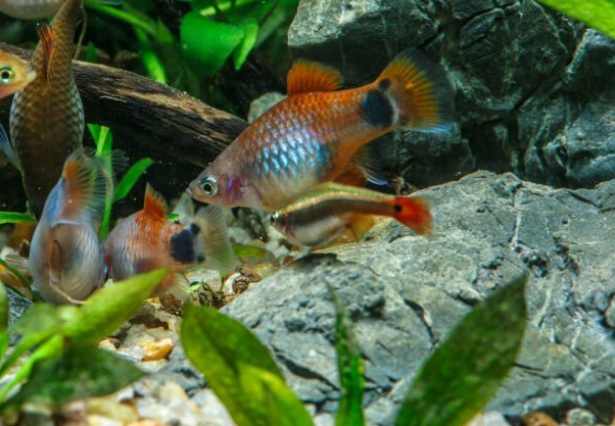
![Can Mollies Have Babies Without Males? [3 Vet advice]](https://www.tinyfishtank.com/wp-content/uploads/2023/02/Can-Mollies-Have-Babies-Without-Males.webp)
![Can Mollies Eat Ants, Bug Bites And Houseflies? A Safety Guide for Fish Owners [Avoid these 4 Insects]](https://www.tinyfishtank.com/wp-content/uploads/2023/11/Mollies-Eat-Ants-768x503.jpg)